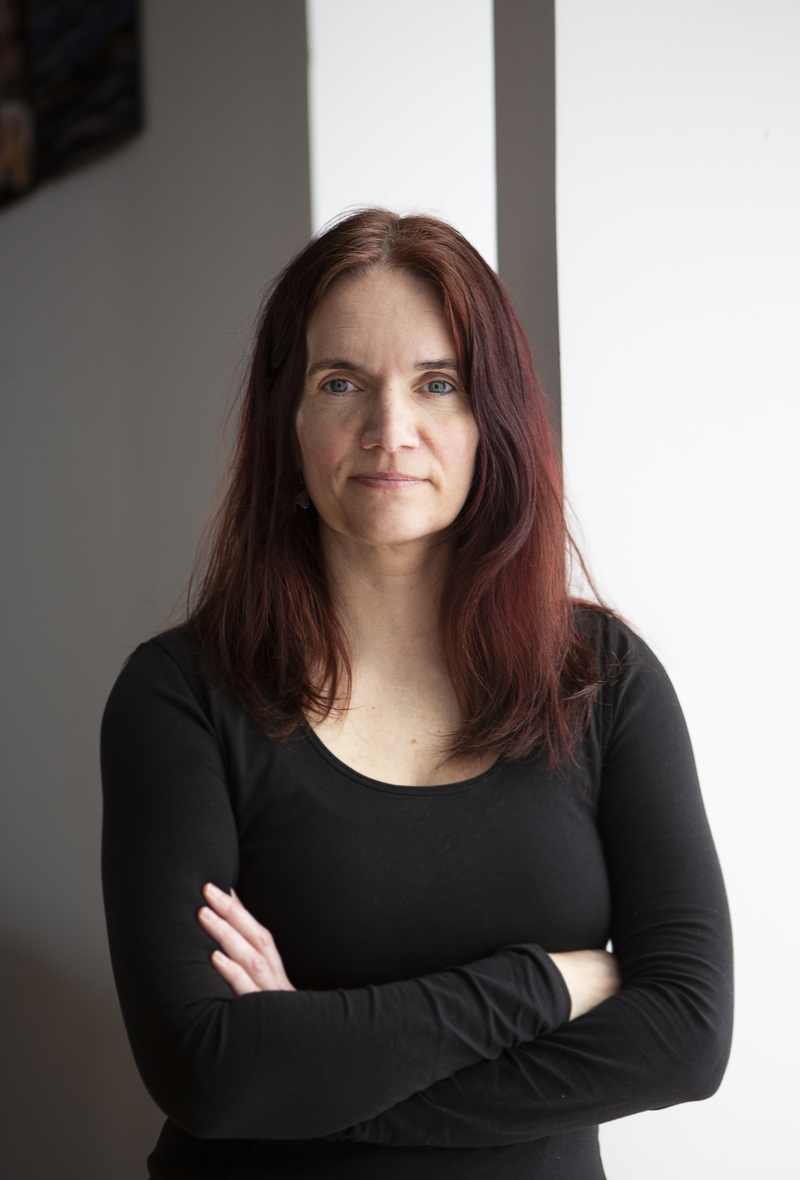Marjun Syderbø Kjelnæs

Marjun Syderbø Kjelnæs
Karmageitin (“The Karma Goat”, not published in English) and Gentukamarið (“The Girl’s Room”, not published in English) is a literary double work, each with its own expression and character. There are two different genres: a collection of poems (Karmageitin) and a dramatic text (Gentukamarið). The works can be read in any order, and are not linearly or causally linked, but form rather two interlocking works, in which the dialogues of the drama, the movements of the poems, the states of mind and the physical spaces grow into each other.
As the title of the dramatic text Gentukamarið indicates, it features a female protagonist. The same is true in Karmageitin, in which we follow the poet-self as an adult, middle-aged woman. The poems are set in the woman’s home, but emerge and grow from the girl’s childhood room. It is from here that the poet’s sense of the world springs, and here that it links itself to the family. The room has been passed down from the aunt to the poet’s ‘I’. The poems leave the girl’s room, but they always return, in cycles small and large. There is a remarkable insistence in the movement of the poems; there is a longing and a desire to become part of the world, but in each poem the desire to connect with, understand and become part of the world is turned on its head and returns home – home to the girl’s childhood room or to the kitchen of the mid-life crisis; not necessarily out of actual homesickness, but as a necessity. As soon as the poem has returned home, the poet ‘I’ disappears and exhaustion sets in, and out of this grows a new longing.
In the second part of the work, the dramatic text of Gentukamarið, the text allows us to enter into and be completely enveloped by the girl’s bedroom. Here we find a different insistence from that which we see in the poems. It is a multi-voiced and at times manic possession; the adult poet-self entering the girl’s room and being haunted by the voice of her mother and her childhood. Here the ‘I’ is all of her ages at once, haunted as a child by her mother’s voice and as an adult by her own child’s voice, and receiving calls from her own daughter’s voice and the voice of myth. The girl’s room dissolves the boundaries and thresholds that exist between the ages and life stages of the self. The ‘I’ becomes all the I’s that may once have been: in development, in conflict, in confusion. Paradoxical and contradictory, and at times briefly gentle and harmonious – all at the same time. The girl’s room and the girlish become a strong force in the double work, something that refuses to be rebuked and put in its place.
The girl’s room thus melds into the house and garden in Tórshavn, and connects with mountains of unused clothes in the Atacama desert, with Iceland’s ravaged coral reefs, with whales that have strayed into the narrowing of the Mediterranean. In the poem Honey (p.68), the itch of the ‘I’ fuses with a sticky dining table. Restlessness and quivering become a storm that reaches Mexico, become a huge swarm of bluebottles, growling car engines, buzzing traffic and oil pumps, before returning to the kitchen where they settle back into the I. The discomfort, the itching of the skin and the stickiness, is a swarm of flies, is cars and pumps and oil.
Marjun Syderbø Kjelnæs (born 1974) is a well-known and active voice on the Faroese literature and drama scene, and has published a wide range of works since her debut in 2000. Her youth novel Skriva í sandin, 2010 won the Nordic Children’s Book Prize and was selected for the White Raven in 2011, and her latest youth novel Sum Rótskot was nominated for the 2021 Nordic Council Children and Young People’s Literature Prize.. She has been awarded a number of prizes and scholarships, and her works have been translated into the various Nordic languages as well as into English, French and German.